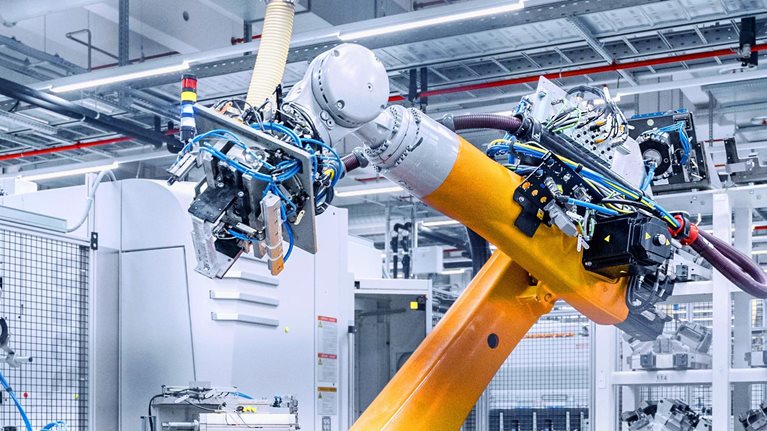Generative AI (gen AI) is making its mark across a gamut of industries and functions. Yet as companies seek to capture the immense economic potential from gen AI and traditional AI, they’re finding that it will take time to identify and prioritize the most impactful and economically sound use cases, understand what is and isn’t—yet—achievable, and train employees for a broad range of applications and initiatives.
M&A is no exception. There are significant opportunities for gen AI across the end-to-end M&A process, from defining an M&A strategy to conducting due diligence to executing integrations or separations. Delivering successful transactions and building an effective M&A program is a resource-intensive process with numerous pain points, and it’s clear that new technologies can help. In fact, gen AI solutions are already being successfully applied.
The goal of this article is not to reel off big numbers; suffice to say, the potential is enormous. As dealmakers prepare for what’s to come, we want to share our real-time perspective. We’ll explore some potential M&A use cases, provide examples of solutions that are already being deployed, and offer practical steps on how organizations can use gen AI to enhance their M&A capabilities.

M&A Annual Report: Is the wave finally arriving?
How gen AI is gaining traction in M&A
For years, our research has shown that taking a programmatic approach to M&A in the long term can significantly boost an organization’s performance compared with its peers. Yet M&A execution is a very labor-intensive activity, requiring thoughtful allocation of resources and a balanced focus between integration activities and core business continuity. It is inherent to the nature of M&A that any deal, small or large, requires real work and real people capacity to successfully execute it. Gen AI, like many other technologies, exists to help leaders do more with less, make better decisions, and ultimately help their organizations create value in the long term. More specifically, four categories of use cases for gen AI can materially improve the M&A process: faster and better-quality sourcing of potential targets; expediting the diligence and negotiation process; executing the integration or separation with excellence; and strengthening in-house M&A capabilities.
Faster and better-quality sourcing of targets
There is a surfeit of potential companies to acquire, sell to, or partner with. A huge amount of data about these companies is obtainable. In fact, there’s so much information that organizations’ M&A teams can get bogged down sorting through and processing it all. The most successful M&A programs look beyond their core business into adjacencies and potential step-outs, and this is where gen AI can be most impactful. Companies are in a race because their competitors are searching for targets, too. They also have to be thorough: target assessment needs to encompass several dimensions to identify the highest-value potential targets with the right strategic and cultural fit. Deal scanning is a prominent, proven use case for traditional AI, but when coupled with gen AI it can go further to find and interpret broader sets of structured and unstructured data, synthesize results to answer quantitative and qualitative prompts, and highlight key elements of strategic, financial, and cultural fit of all potential targets. With gen AI, companies can identify and pursue targets they wouldn’t otherwise have on their radar (exhibit).

For example, a North America–based company in the consumer-packaged-goods industry used McKinsey’s proprietary tool DealScan.AI to search and evaluate potential investments. First, the tool identified approximately 1,600 viable targets according to initial prompts. Then it applied bespoke quantitative and qualitative prioritization criteria, including whether there was a direct-to-consumer operating model, information about subscription-based product assortments, and details about recent fundings. This led to the prioritization of 40 targets—most of which the company had not considered before—that matched all requirements.
Expediting the diligence and negotiation process
Gen AI can expedite the diligence and negotiation process. For example, it can summarize key diligence documents, surface risks, draft initial memoranda based on a deal’s specific parameters, source applicable statutes and regulations, identify helpful case law to ease friction in the negotiations phase, and generate other highly accurate outputs (such as first drafts of the deal announcement and regulatory filings). As one can imagine, these use cases can save a significant portion of the time currently required to perform the different legal tasks involved in deal negotiations, signing, and closing.
Executing the integration or separation with excellence
Seasoned dealmakers know that deal synergies need to be captured quickly—and that sometimes, by taking too long, companies can squander significant value. Organizations going through sizable M&A events are particularly likely to get diverted and see organic momentum decline, with an average decrease in excess revenue growth of seven percentage points compared with peers.1 Sluggish integrations can frustrate customers, demotivate employees, and sometimes cause organizations to stall.
Tools powered by gen AI can do a lot of the heavy lifting. In fact, a wide range of time- and resource-consuming tasks can be accelerated and, in some cases, almost fully automated. One striking use case is to have a gen AI “coach,” trained on M&A best practices and on the organization’s specific M&A playbook, that delivers fast and smart answers to questions from integration and separation leaders and team members. Applications are rapidly evolving, including McKinsey’s myIMO, which is powered by gen AI to help improve team capabilities and efficiency. For example, a team could ask the tool, “What are the right steps to integrate the acquired company’s brand with our own, and what is the best timing to do that?” Or a team could give it the following prompt: “Draft a memo about upcoming changes in employee benefits considering the following changes.” The application is trained on a vast repository of M&A playbooks and best practices to help companies make well-informed decisions about their integrations or separations. Other uses being developed include post-day-one value creation recommendations, such as identifying real-time synergy opportunities based on a company’s available data; automated summaries and comparisons of internal policies that need to be harmonized between the two organizations; the quick comparison and harmonization of job title and hierarchy structures, cost center, and general ledger definitions; and the automation of change management activities. The list goes on.
Strengthening in-house M&A capabilities
Gen AI can strengthen a company’s internal capabilities by drawing on companies’ proprietary data from past deals to assess performance patterns and find insights about untapped opportunities. For example, it could assess a company’s portfolio of acquisitions and calculate the impact brought by each deal. It could also generate postmortem insight about how deals affect the business (for example, how and when the company’s organic revenue growth is typically affected after closing a deal). It could update the company’s proprietary playbook with recipes, nuances, and lessons learned (for example, “Deals of up to $1 billion typically require an integration team of five people, focused on the following tasks”). It could even generate personalized training programs in line with the specific function of an integration team member, as well as with the acquisition type and the deal timing (based on the following prompt, for example: “I am new to the team. I will be leading the HR integration for our acquisition of X company. What do I need to know? Where do I start?”).
How to get started
Gen AI will not fix a broken approach to M&A; it might even exacerbate it. The first step for senior leaders is to frankly assess their current level of M&A capabilities and to consider where in the M&A process technology can be used to materially improve the M&A engine.
The next steps are just as foundational:
- Prioritize the gen AI use cases that create the most value. If your M&A strategy is focused on acquiring dozens of very small players, gen AI will have the greatest impact on opportunity scanning and assessment. Conversely, if you do one to two larger deals a year, gen AI may also help you streamline and accelerate the execution processes.
- Drill down on whether to develop or to adopt. There is a full spectrum of choices for how a company can bring its prioritized use cases to life, and off-the-shelf solutions have recently been brought to market—with more expected over the next one to two years. As with any decision to either use in-house resources or outsource, leaders should consider their team’s existing expertise, the size of the required investment, the extent of the potential return (including how sustainable any competitive advantage would be), and the actions that the company’s peers are or could be taking.
- Ensure that the right guardrails are in place. Gen AI is distinct from most existing technologies because it heightens certain risks—for example, security breaches, given its ease of access; reputational risks from quality control missteps; and potential intellectual property infringement. Legal and regulatory developments are fast moving, even as gen AI races forward. And the better the AI models are, the greater the potential risk that humans will simply disengage and not catch issues until it’s too late. It’s essential that organizations keep human beings at the forefront of the work, proactively identify and mitigate risks in partnership with their legal and technology teams, and maintain rigorous ethical standards.
Gen AI is a predictive language model, not a human being. As companies navigate the gen AI transition, they should consider how to use their newly freed-up time to focus on more strategic, high-value activities such as relationship building and eureka-moment problem solving, which technology cannot (yet) replace.
Commercial applications of gen AI in M&A are already gaining traction and will almost certainly accelerate in the next few years. The greatest question is not whether gen AI will affect dealmaking—it already is—but to what degree, how quickly, and to what consequence. We’ll be monitoring these developments in real time as they proceed.

















